



































MIDWEEK UPDATE 28 JULY 2022
Google Banner Ad



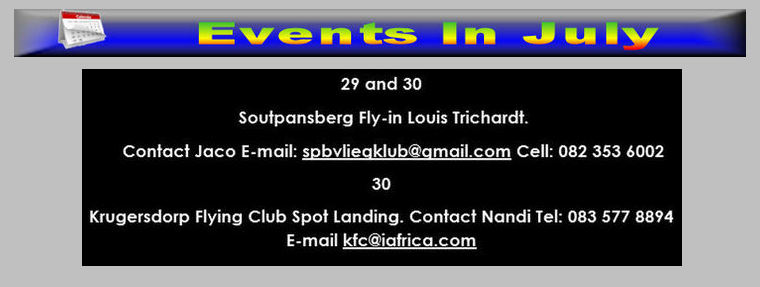



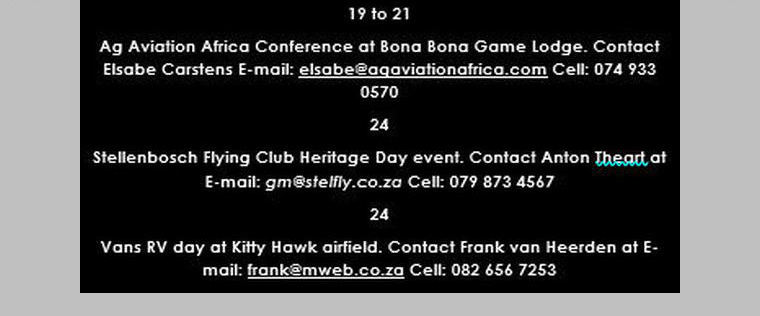

Guy Martin defenceWeb

The GGDA highlighted to exhibitors its business incubation and development initiatives; innovation hubs; investment environment opportunities in Gauteng; and the support and incentives it provides to businesses.
Simphiwe Hamilton, Group CEO of the GGDA, told defenceWeb that it took a lot for South Africa to pull off hosting the 6PTPS and it is an achievement to be proud of. He said it was significant as South Africa is not just one of the biggest contributors to United Nations peacekeeping efforts but has a strong defence industrial base, "that although potentially weakened in the last few years, still has a lot of potential that can be offered to the UN."
With regard to supplying the UN, Hamilton believes the industry can assist with more than aerospace and defence products and services as there is a big requirement for things like catering and ICT services.
South African companies have provided armoured vehicles, and other equipment, for UN missions and these have served well in combat conditions. "We owe it to ourselves and the world to provide solutions for peacekeeping and beyond," he said. However, "the industry is at a point where it will require direct and deliberate political support to secure opportunities and rescue capabilities that may be ailing."
South Africa has a lot in terms of goods and services it can offer the United Nations, but companies need access, and the types of requirements the UN has for bidders are not easily funded by local institutions, such as bid bonds and performance bonds. However, Hamilton believes there could be fruitful collaboration in this regard with entities like the Defence Industry Fund, which could fund those bonds.

As Gauteng is endowed with the biggest defence footprint in the country, it was logical for the GGDA to be the diamond sponsor of the UN Procurement Summit and Symposium, "but our economic landscape is more than just defence," Hamilton explained. "Our support to industrial players is more than just defence. The province has an economic development strategy called Growing Gauteng Together: Our Roadmap to 2030. Aerospace and defence have been identified as one of ten high growth sectors we are working on…as it is one of the key sectorial focus areas we have as a province.
"Gauteng being the economic powerhouse didn't happen by default or a fluke. The province has good infrastructure, brilliant research institutes, universities that are world class," he explained. "Gauteng as a province is working quite closely with different role players nationally, particularly the Department of Trade and Industry to increase investments into the province. There is a plethora of projects that are being rolled out to create investment-ready opportunities for investors that want to come into the province. We are working on various industrial hubs that we are beginning to refurbish, re-establish and revitalise."
A success story Hamilton underlined is the Tshwane Automotive Special Economic Zone (SEZ), which has attracted billions of rands in investment from Ford, amongst others. These SEZs are a sign of Gauteng's commitment to attract investors, and Gauteng has ambitious plans to develop multiple SEZs to grow the province's economy. SEZs are specifically designated areas that offer incentives to attract businesses to them. Incentives can potentially include VAT and customs relief, employment tax incentives, reduced corporate income rates and building allowances.

Apart from the automotive industry, other focus areas include aerospace and defence, agri-processing, ICT, energy, tourism and hospitality, and the green economy.
"We need to go out there and grow this economy," Hamilton said. "If Gauteng is not growing, the whole country is not growing. We need to push hard for Gauteng to grow and the province is working hard on that," especially as Gauteng is the gateway to the rest of the continent.
After South Africa successfully hosted the United Nations symposium, Hamilton is looking forward to Gauteng hosting the 2022 edition of the Africa Aerospace and Defence (AAD) exhibition, which runs from 21 to 25 September at Air Force Base Waterkloof. "It is the biggest aerospace and defence expo on the continent," he said, and possibly the single biggest exhibition in South Africa.
Although there will be a lot of direct benefit to the local economy through travel, accommodation, catering etc., trade deals arising from the exhibition will positively impact on Gauteng in the medium to long term. Hamilton believes the recent lifting of Covid-19 restrictions will have a positive effect on the show, with more visitors attending.

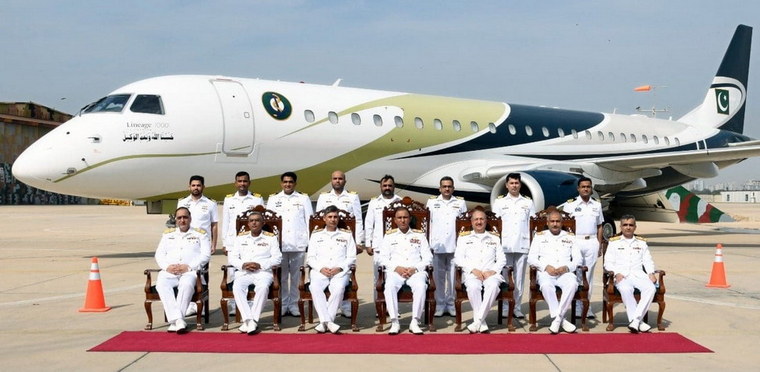
Defence News reported the initial tender went out in November 2020, with Leonardo beating Rheinland Air Services and Turkish Aerospace Industries. A $190 million contract was subsequently signed with Leonardo in June 2021.
The Pakistan Navy inducted the first Lineage 1000 in September 2021, at a ceremony at Pakistan Naval Station Mehran in Karachi. This aircraft (ex B-3203, cn 19000453) is unmodified and used for crew training.
At the beginning of July, The Intel Consortium reported that Pakistan had secured two more Lineage 1000 airframes for Sea Sultan conversion, including A6-HHS (cn 19000296), which at the beginning of June was tracked by RadarBox flying around Pretoria.
The two aircraft were formerly owned by Falcon Aviation Services in Abu Dhabi and flown to Pretoria for conversion work. It is believed they will be fitted with search radar and weapons stations for torpedoes, sono-buoys, depth charges and other weapons.
The second Lineage 1000 owned by Falcon Aviation Services is, according to Scramble magazine, A6-IGT (c/n 19000362), but it is not certain if this airframe is involved in the deal.
.jpg)
PIAGGIO AEROSPACE GETS NEW AVANTI EVO ORDER FROM FRENCH CUSTOMER

French Operator Oyonnair, a company specializing in medical and cargo transportation, has signed today an order - through its financial arm Investairs - for the purchase of a new P.180 Avanti EVO, the executive aircraft produced by Piaggio Aerospace.
The new P.180, which is expected to be delivered by the second quarter of 2023, will be set up in medevac configuration, with an enlarged door (from 24 to 29 inches wide) and an additional fuel tank, to offer better performance and mission flexibility.
Oyonnair, founded in Lyon in 1990, started operating its first Piaggio P.180 in 2015. With this order, Oyonnair's P.180 fleet reaches eight units.
"We are very excited to announce the purchase of a new Avanti Evo, the perfect fit aircraft for medevac operations," said Daniel Vovk, Chief Executive Officer of Oyonnair. "The Avanti Evo is fast, versatile and an efficiency champion, thanks to the lowest fuel consumption in its category and the option of flying SAF, thus reducing carbon emissions. With the new configuration, we can offer our clients even better performance: for this reason, and according to our growth strategy, we are now aiming at ordering three more aircraft by the end of this year".
"Piaggio Aerospace is grateful to Oyonnair for the renewed trust in the Avanti EVO, the company's flagship product, and Piaggio Aerospace itself", said Vincenzo Nicastro, Piaggio Aerospace's Extraordinary Commissioner. "Now that we are definitively close to identifying a new owner, such an announcement confirms that the company is healthy and 'on the market', ready to further unleash its potential".
At present, with its 42 employees, Oyonnair is the leading operator in Europe in medical evacuation, with a yearly average of 5 thousand flight hours and over 1200 missions. In the years 2020 and 2021, the company helped the French government with the Covid crisis, by evacuating approximately 250 patients from saturated hospitals to less busy ones. Oyonnair's team has also recently decided on the modification to retrofit two of the seven older P.180, in particular with the setting up of the enlarged door. The first retrofitted aircraft was delivered by Piaggio Aerospace last June. A second one is planned to be retrofitted starting from October 2022.
Piaggio Aerospace is one of the main players in the world for executive turboprops, both in VIP and special mission configurations. The company operates from its aerospace centre of excellence in Villanova d'Albenga, Italy, while its Customer Service Department is based in Genoa. In December 2018, the company entered the Extraordinary Administration procedure by appointing Mr. Nicastro as Extraordinary Commissioner. The same applied later to its subsidiary Piaggio Aviation.
.jpg)
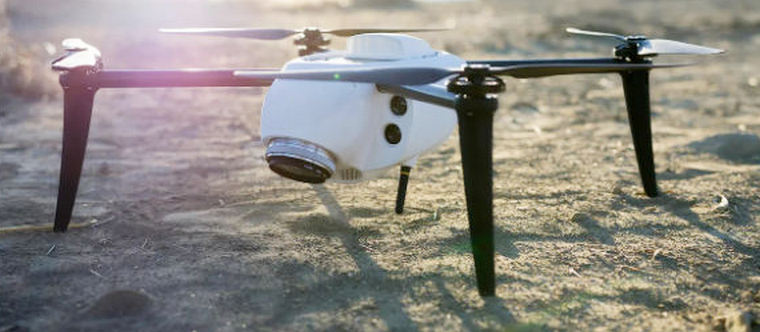
This was revealed during an AAD build-up event hosted at Waterkloof on 15 July (67 days until AAD 2022), which also witnessed a youth development initiative by the organisers to coincide with Mandela Day (18 July) and Nelson Mandela International Day outreach initiatives.
Sixty-seven learners from Mshuluzani Mayisela Primary School in Bronkhorstspruit were educated on aerospace and defence careers by the SA Air Force, ATNS, SA Civil Aviation Authority, Saab and Hensoldt. The Deputy Chief of the South African Air Force, Major General Innocent Buthelezi, said "we aim to ignite the spark of aviation in their minds so that they can always remember that they were part of this august moment."
Buthelezi was present on Friday for the signing of agreements between the AAD organisers and partners including the City of Tshwane, Gautrain, and South African Airways. Buthelezi said that the world has changed a lot since the last AAD in 2018 but some things have remained the same, such as aerospace and defence being vital triggers for many economies around the world to grow and survive. "We found that countries and governments still need world class capabilities, technologies and equipment to protect and secure the sovereignty of borders and safeguard the lives of people at all costs."
The AAD organisers, he said, are not ignoring the momentum growing in the use of military and commercial UAVs, and thus for the first time in the history of AAD, "we have secured permission for the use of UAVs during the show. This is indeed a milestone for AAD."
A Phantom 4 Pro UAV was flown inside one of the hangars at Air Force Base Waterkloof to reinforce the organisers' commitment to bringing UAVs to the exhibition. UAVs will also take part in the two air show days on 24 and 25 September (the trade days are 21-23 September).
Buthelezi said that when Defence Minister, Thandi Modise, launched AAD 2022 on 5 May, "we knew without a doubt it was all systems go. It is indeed all systems go. The organising team together with partners AMD, Armscor, and CAASA, have been working tirelessly behind the scenes to bring to you an AAD as you best know it."
Tshwane Executive Mayor Randall Williams said "we are very thrilled to once again be associated with Africa's only exhibition and air show that showcases aerospace and defence technology. As the city of Tswhane, we believe this event is a real opportunity to demonstrate Tshwane as a great host… We recently hosted the Aero SA trade show at Wonderboom National Airport, an airport that belongs to the city. The event was a great success and demonstrates the city's interest in the aviation sector. Such events have a great economic impact and offer job opportunities to residents."

Michelle Nxumalo, AAD Exhibition Director, told defenceWeb that nearly 70% of exhibition space has been booked out and around 300 companies have signed up to take part in the exhibition. Although this is a slight decline on 2018, it is to be expected given the covid-19 pandemic and other disruptions.
The United States Air Force has committed to coming to the show, while various African countries have been invited, and it is likely that the Zambian and Zimbabwean Air Forces will be in attendance as well as a full South African Police Service contingent.
As in the past, there will be a mobility track for vehicle demonstrations, but new additions to AAD 2022 will be the inclusion of the oil and gas and mining sectors as AAD diversifies. There will also be an African Unity pavilion as well as numerous national pavilions.

defenceWeb
The company said the twin engine H135s will be used for training pilots to perform a wide array of demanding missions including utility and search and rescue. The contract also covers a support package including the delivery of Flight Training Devices and the training of instructor pilots and maintenance pilots. The training programme will enable Morocco to take full advantage of the H135's multi mission capabilities such as NVG and winching, Airbus Helicopters said.
"We are proud that the Forces Royales Air has selected the H135 for their training missions. It is a reliable, cost-efficient multirole helicopter that is ideally suited to transitioning to more complex aircraft," said Arnaud Montalvo, Head of Africa and Middle East at Airbus Helicopters. "We are sure that the H135s will be a great asset to their fleet and we look forward to bringing them the best support in co-operation with our strategic partner Heliconia with its entry into service in the country," he added.
With Morocco's order the H135 (formerly known as the EC135) is now flown by 12 military operators, including the armed forces of the Brazil, Gabon, Ireland, Spain, Thailand, the United Kingdom, Australia, Germany and Japan. Over 130 units are in service with militaries around the world, and have accumulated over 400 000 military flight training hours.

The H135 has accommodation for seven (including two flight crew) in its standard configuration, and boasts a maximum take-off weight (MTOW) of 2 980 kg; a maximum payload of 1 360 kg; a top speed of 259 km/h; a range of 633 km with standard fuel and at normal MTOW; and an endurance of 3 hours 35 minutes.
Morocco is a previous Airbus Helicopters customer - for example, in January 2020 the country's Gendarmerie took delivery of two H125 helicopters, joining its fleet of nearly three dozen aircraft.
Army Aviation operates Alouette II, Gazelle and A109 helicopters and in 2020 the Royal Moroccan Air Force (RMAF) ordered 24 AH-64E Apache attack helicopters from Boeing, for delivery from 2024. The RMAF operates a large fleet of helicopters which includes 19 Aerospatiale SA-342 Gazelles, between 10 and 12 Agusta-Bell AB-206 (Bell 206) Jet Rangers, 25 AB-205As, two Sikorsky UH-60 Black Hawks and 24 SA-330 Pumas, as well as half a dozen CH-47 Chinooks.

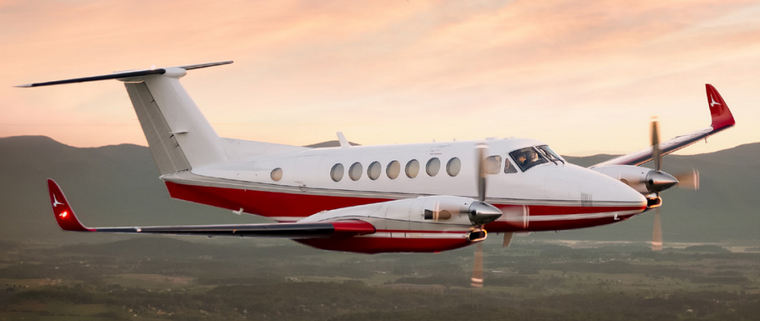
Military and civilian prospects for acquiring the modified King Airs are interested in the technology's resulting double digit fuel savings and increased range, enhanced high/hot take-off performance, extended loiter time, increased payload, and support for safe sustainable flight including noise reduction.
The Tamarack Performance SMARTWING modification is expected to replace current King Air passive winglets, providing substantially more capabilities and significant fuel cost savings.

Two U.S. Navy F/A-18E Super Hornets completed multiple ski-jumps, roll-in and fly-in arrestments, as well as performance flights, in a variety of weights in the air-to-air, air-to-ground, and air-to-surface configurations, meeting the Indian Navy test requirements.
"The Boeing team was privileged to showcase the F/A-18 Super Hornet's compatibility with Indian carriers in Goa," said Alain Garcia, Vice President, India business development for Boeing Defence, Space & Security and Boeing Global Services. "As the most advanced frontline multi-role naval fighter, the F/A-18 Super Hornet is one of the world's most proven and affordable multi-role fighters and continues to evolve with the development of the next-generation Block III capability which will be game-changing for India."

"With the Super Hornet Block III, the Indian Navy would not only get the most advanced platform but would also benefit from tactics, upgrades and knowledge related to the naval aviation ecosystem that the U.S. Navy offers," he added.
The tests followed eight ski-jumps in various weights and configurations during previous tests held at Naval Air Station (NAS) Patuxent River in Maryland in late 2020 that demonstrated the Super Hornet's ability to operate from a short take-off but arrested recovery (STOBAR) aircraft carrier.

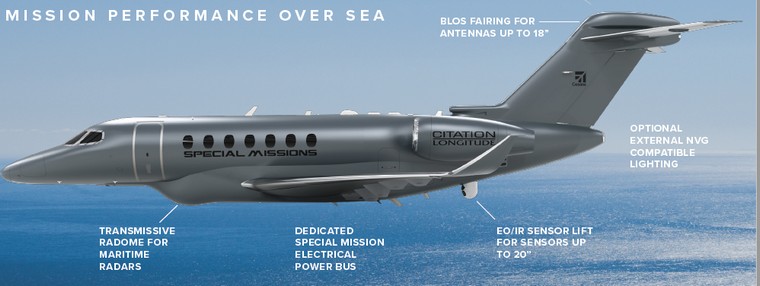
With an eight hour maximum endurance and 3,500 nautical mile maximum range, the Cessna Citation Longitude MPA is outfitted with a transmissive belly radome for maritime radars, Beyond Line of Sight (BLOS) fairing, Electro-Optical/Infra-Red (EO/IR) sensor lift, and optional Night Vision Goggle (NVG) compatible lighting, making it ideally suited for surveillance missions over land and water, conducting search and rescue, border patrol, fishery monitoring, and more.
Endless Special Mission Possibilities
When government, military and commercial customers want airborne solutions for critical missions, they turn to Textron Aviation. The company's aviation solutions provide the high performance and flight characteristics required to address the unique challenges of special mission operations. With unparalleled quality, versatility and low operating costs, Textron Aviation products are preferred for air ambulance, ISR, utility transport, aerial survey, flight inspection, training and a number of other special operations.

SOUTH AFRICA

On Wednesday morning, 15 December 2021, a flight instructor (FI) and a student pilot (SP) on-board a Cessna 310Q aircraft with registration ZS-BRO departed Rand Aerodrome (FAGM) in Germiston, Gauteng province, on a training flight to the Johannesburg South General Flying area (GFA) with the intention to land back at the same take-off aerodrome.
The flight was conducted under visual meteorological conditions (VMC) by day and under the provisions of Part 141 of the Civil Aviation Regulations (CAR) 2011 as amended.
The FI reported that they conducted a thorough pre-flight and pre-take-off checks with no anomalies found. The aircraft had a fuel endurance of 3 hours (hrs). At approximately 0852Z, the duo took off from FAGM to Johannesburg South GFA. The flight lasted approximately 35 minutes.
On their return flight during final approach for landing on Runway 35, they followed the pre-landing checklist and selected the gear lever to the down position. The three green lights illuminated which indicated that all three landing gears were down and locked. The FI further reported that the approach and landing were normal. However, halfway through the landing roll, the left-side of the aircraft started to sink, followed by the left-side propeller blades tips contacting the runway surface.
As the aircraft slowed down and veered off to the left of the runway, the left-wing tip eventually touched the grass. The aircraft came to a stop facing the opposite direction from which it had approached, approximately 45 metres (m) from the runway edge.
The FI switched off the master, magnetos and the fuel selector valve before he disembarked the aircraft with the SP. According to the FI, there was no evidence of fire or fuel leak after disembarking the aircraft.
The aircraft was substantially damaged. Both occupants were not injured during the accident; they exited the aircraft without any assistance.During visual inspection of the aircraft at the accident site, the left main landing gear had almost retracted inside the wheel well and both lugs attachments of the drag brace had broken off from the oleo strut; as a result, the aircraft had leaned towards the left-side, sustaining scratches along the bottom of the left wing and propeller tips. The aircraft also sustained substantial damage to the left main landing gear, which collapsed; the left landing gear bell crank lower lug; and the trunnion upper clevis which fractured.
One of the fractured lugs as well as the clevis were found on the runway (Figures 6 and 7), and the landing gear lever was found inside the cabin in the down and locked position.Although the flight instructor reported that the landing was normal with no crosswind, side load or hard landing during the landing roll, it is likely that the aircraft landed hard on the left main gear, inducing overload on the upper trunnion clevis. This resulted in the left main landing gear upper trunnion clevis and bell crank lower lug breaking, followed by the left wing tip and left propeller striking the ground.Probable cause:
It is likely that the aircraft was unstable on approach and landed hard, resulting in the left main landing gear collapsing and the aircraft veering off the runway.
Contributory factor:
None.

Kenya, Kakuma Airstrip: A Cessna 208B Grand Caravan suffered a runway excursion at Kakuma Airstrip after the left-hand main gear tire blew during take-off.

USA, Oshkosh-Wittman Field, WI: The RH main gear of the Jack A. Bally 1/3 Scale B-17G with two on board collapsed during landing during AirVenture 2022. No injuries reported to the two persons on board.
Austria, Altlichtenwarth Airfield: An Eiri-Avion PIK-20D glider was destroyed when it crashed during initial climb while taking-off at Altlichtenwarth Airfield - LOAR. The pilot (33) suffered serious injuries.

Spain, Moià-Prat de La Plana Airfield: An Aeroprakt A-20 ultra-light crashed while attempting to land on runway 19 at Moià-Prat de La Plana Airfield. The pilot died in the crash.
USA, Ray Community Airport, Macomb County, MI: A Beechcraft A36 Bonanza failed to take off at Ray Community Airport (57D), Ray, Macomb County, Michigan, and crashed. All three occupants were seriously injured and the aircraft was partly consumed by the post impact fire.

USA, near Basehor, KS: An amateur kit build Airdrome Aeroplanes Nieuport 28 crashed in a bean field, and came to the rest inverted and caught fire near Basehor, Kansas. The sole pilot died and the aircraft was destroyed.
Italy, near Bardonecchia (TO): a Sportine Aviacija LAK-17B glider was reported missing after taking off from the Turin-Aeritalia Airport. It was found a day later near Bardonecchia (TO), in an inaccessible area of the hamlet of Melezet. The pilot died; the aircraft was destroyed.

Spain, Barcelona-El Prat Josep Tarradellas Airport: A Vueling Airlines Airbus A320-214 with 136 on board suffered an APU fire/smoke incident while at the gate at Barcelona Airport, Spain. All occupants were forced to disembark. There has been widespread press and media coverage stating that the captain of the aircraft "abandoned" the aircraft and its passengers, and left the passengers and the remaining crew to "fend for themselves", quote: Andrew Benion, 50, a passenger said he was belting up when there suddenly was a 'huge bang' and the smell of smoke from the back of the plane. All the lights went off and the emergency lights came on - it was terrifying,' he told The Sun. 'One stewardess ran into the cockpit to tell the captain. Then as soon as a stewardess opened the front door the captain ran straight off. He was just gone. He was first off the plane.

USA, N of Beaver Dam, Dodge County, WI: An amateur kit built Van's RV-10: Following an inflight loss of engine power sustained substantial damage upon impact with stationary objects during the forced landing north of Beaver Dam, Dodge County, Wisconsin. The three occupants on-board the airplane was not injured.

29 JUNE 1909
In opening demonstration flights before the U. S. Army at Fort Myer, Virginia, Orville Wright makes the first flight with the new Wright A built to replace the one destroyed in September 1908.

On July 27, 1909 Orville, with Wilbur assisting, completed the proving flights for the U.S. Army. They met the requirements of an aircraft carrying two persons remaining aloft for an hour, followed by a speed trial demonstrating an average speed of at least 40 miles per hour (64 km/h)
In 1912-1913 a series of fatal crashes of Wright airplanes bought by the U.S. Army called into question their safety and design. The death toll reached 11 by 1913, half of them in the Wright model C. All six model C Army airplanes crashed. They had a tendency to nose dive, but Orville insisted that stalls were caused by pilot error. He co-operated with the Army to equip the airplanes with a rudimentary flight indicator to help the pilot avoid climbing too steeply. A government investigation said the Wright model C was "dynamically unsuited for flying" and the American military ended its use of airplanes with "pusher" type propellers, including models made by both the Wright and Curtiss companies, in which the engine was located behind the pilot and likely to crush him in a crash.
Orville died at age 76 on January 30, 1948, over 35 years after his brother, following his second heart attack, having lived from the horse-and-buggy age to the dawn of supersonic flight.
Google Banner Ad

 |
 |
 Copyright © 2024 Pilot's Post PTY Ltd
The information, views and opinions by the authors contributing to Pilot’s Post are not necessarily those of the editor or other writers at Pilot’s Post.
Copyright © 2024 Pilot's Post PTY Ltd
The information, views and opinions by the authors contributing to Pilot’s Post are not necessarily those of the editor or other writers at Pilot’s Post.